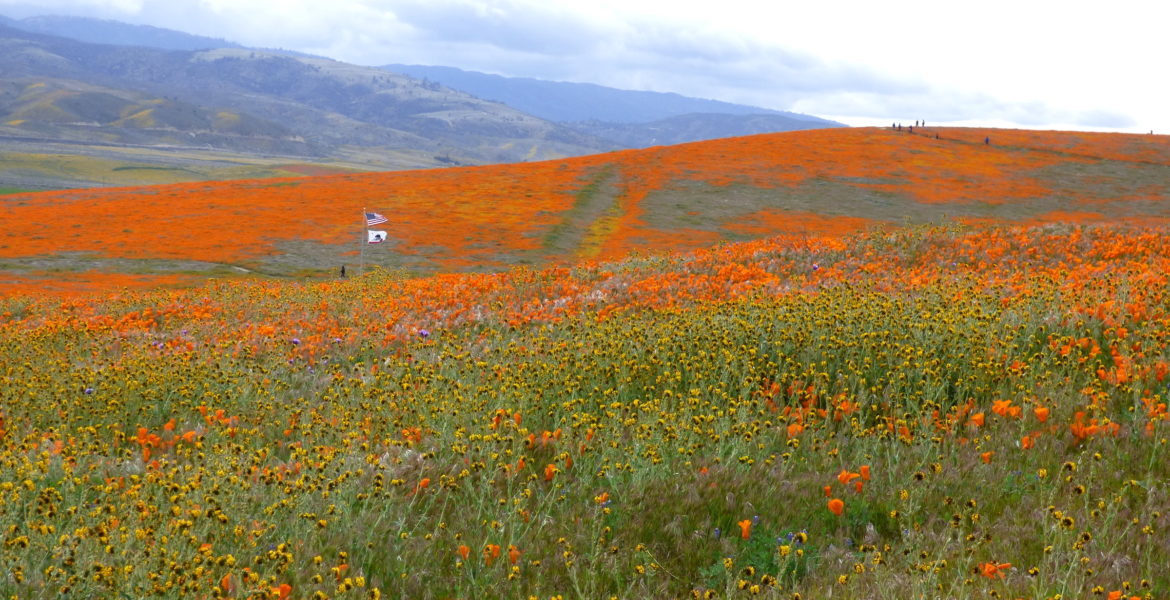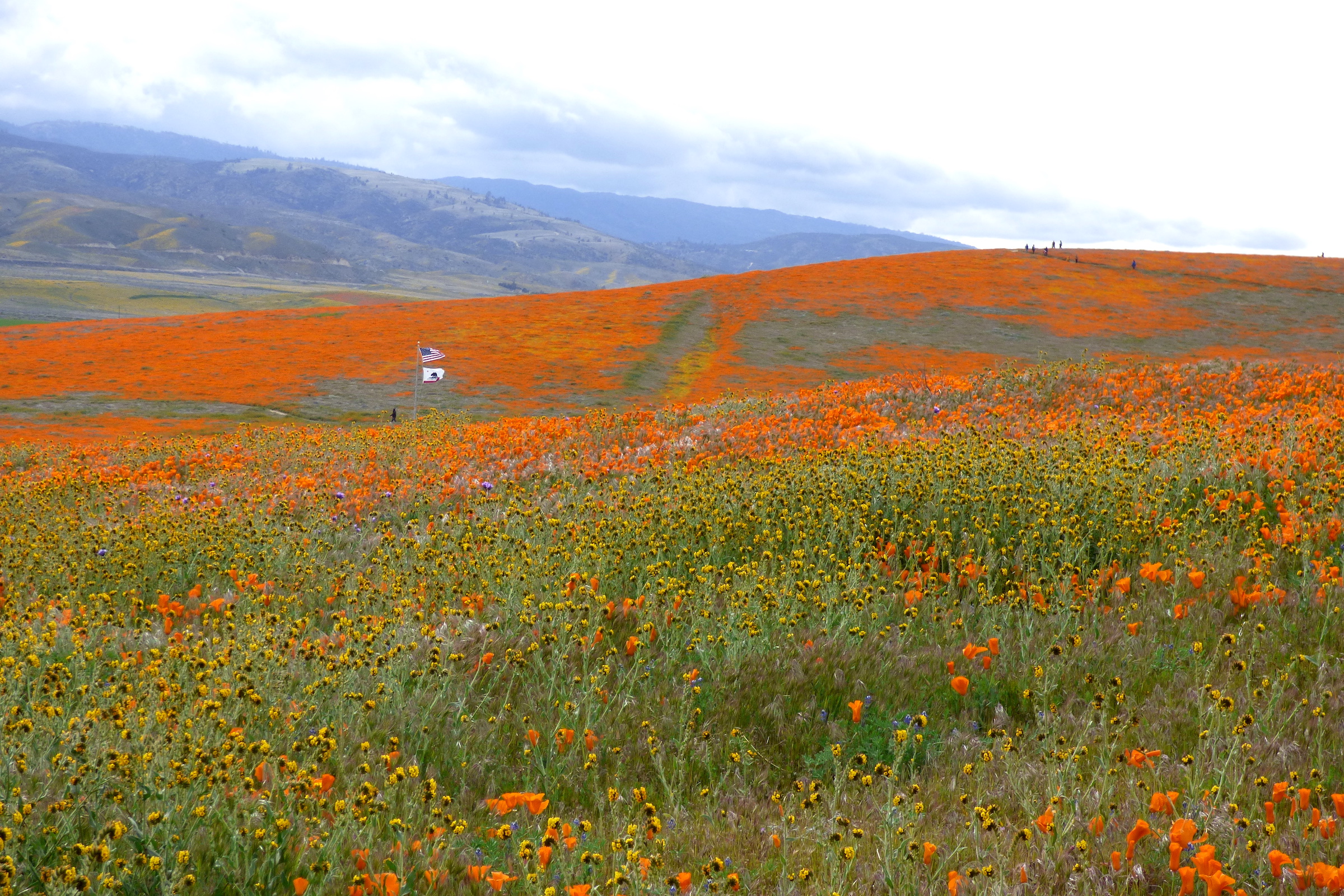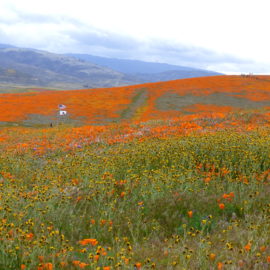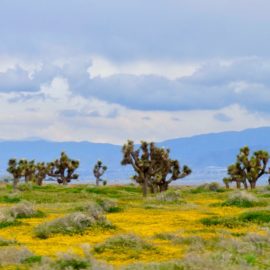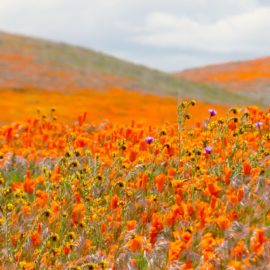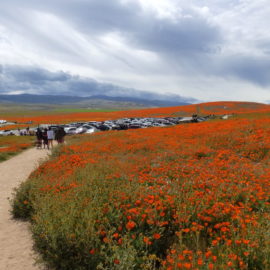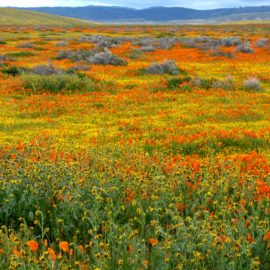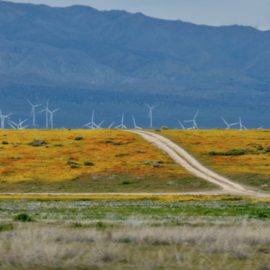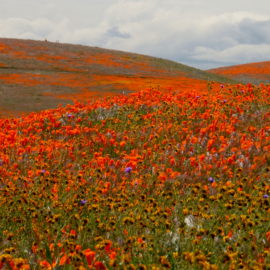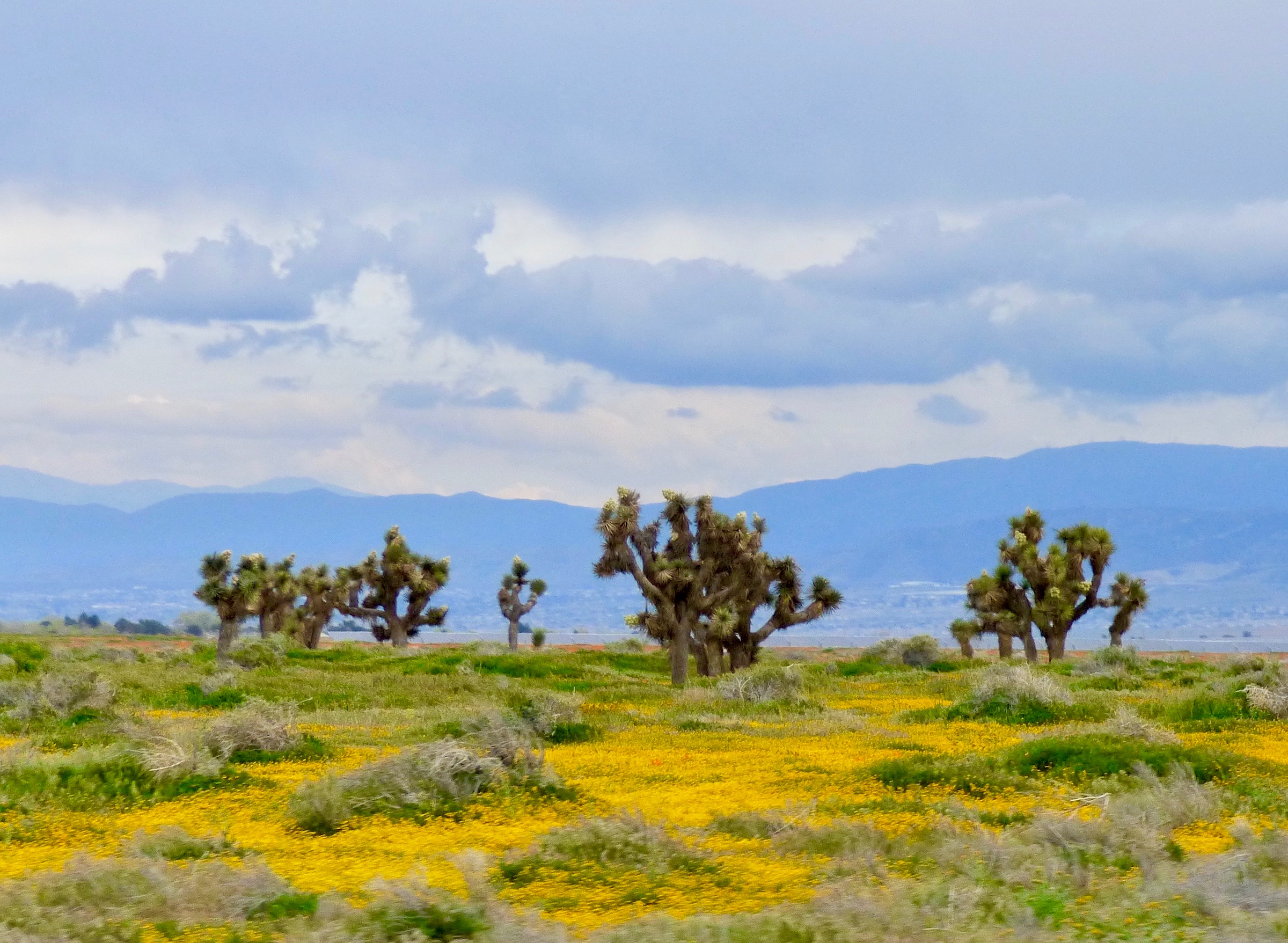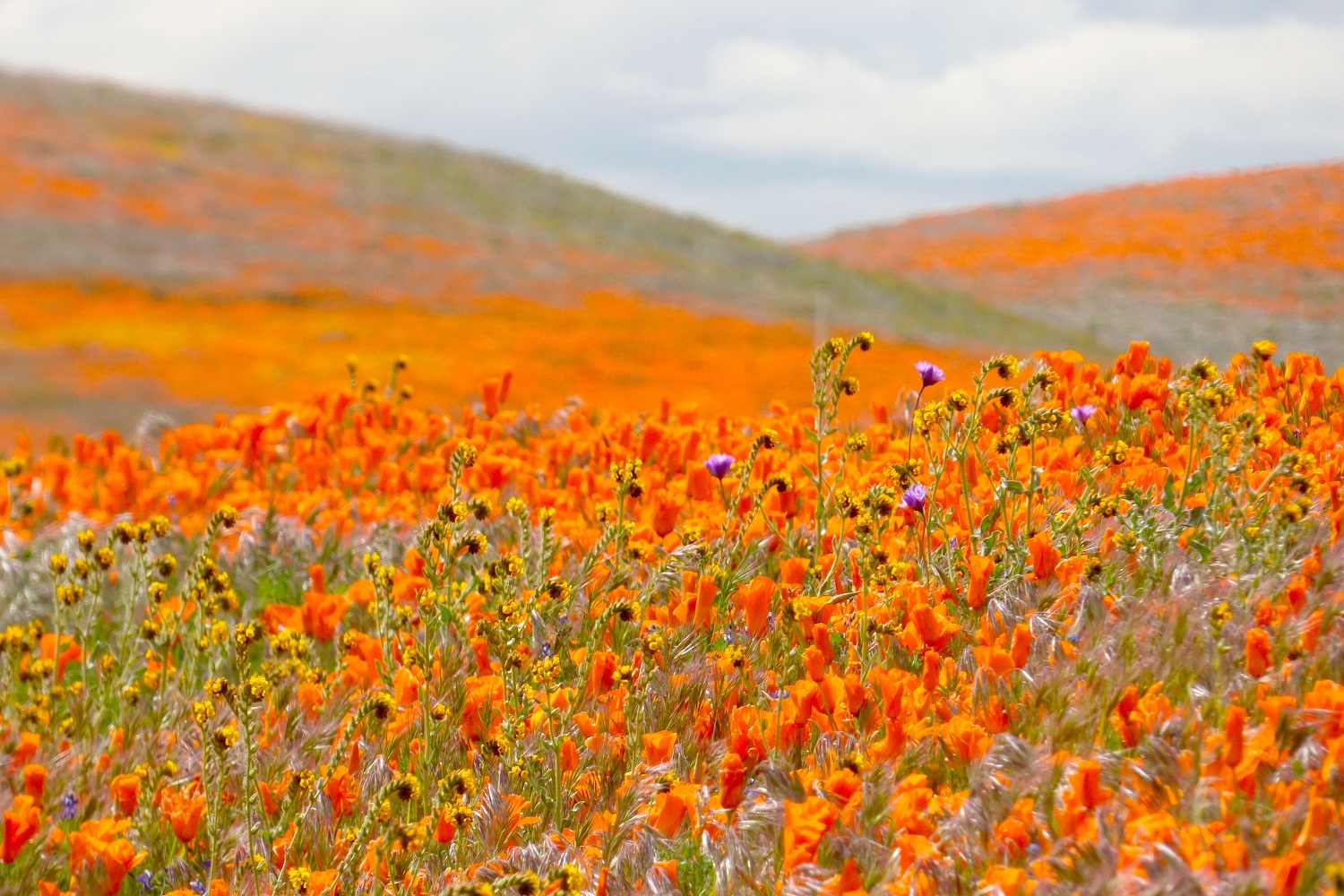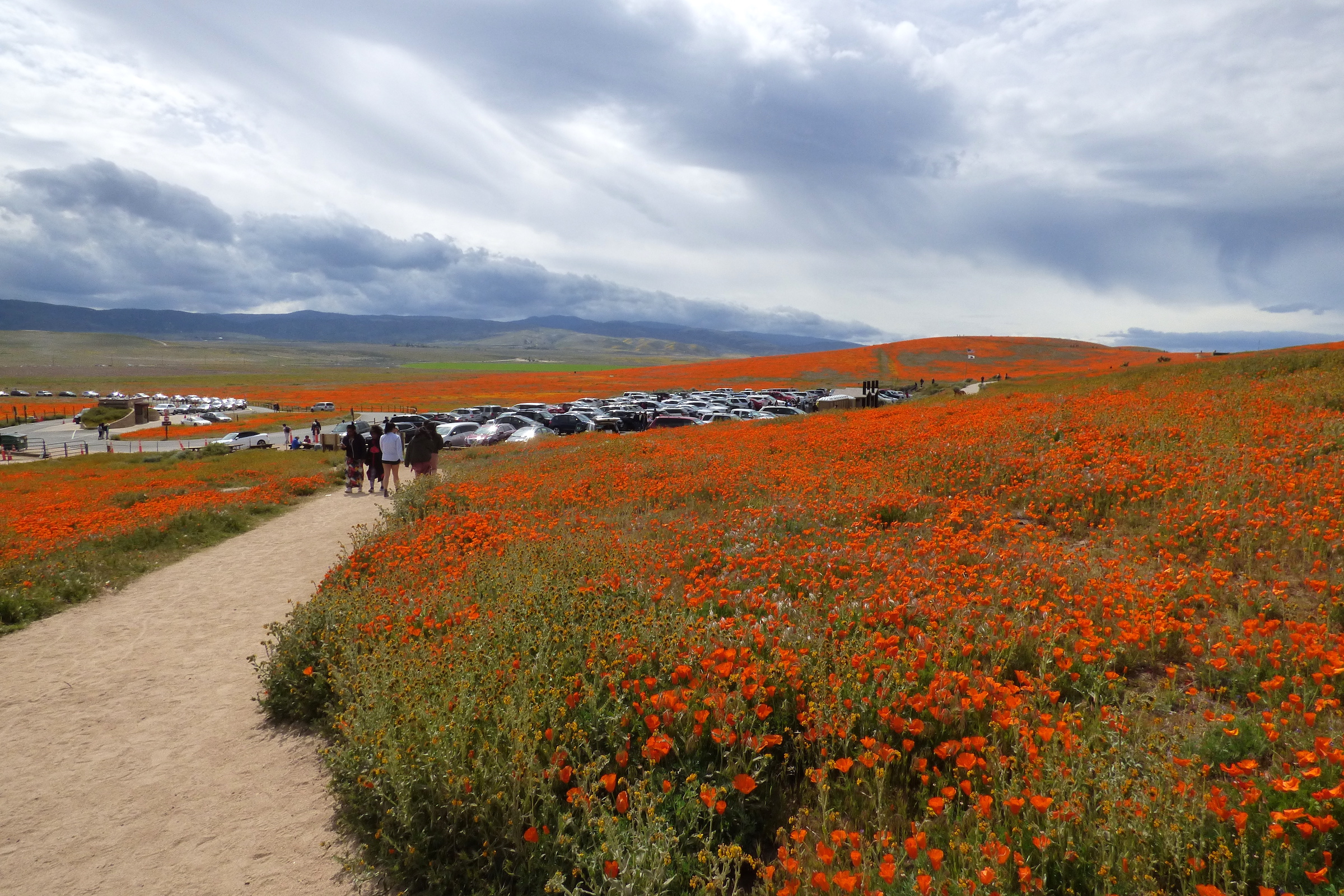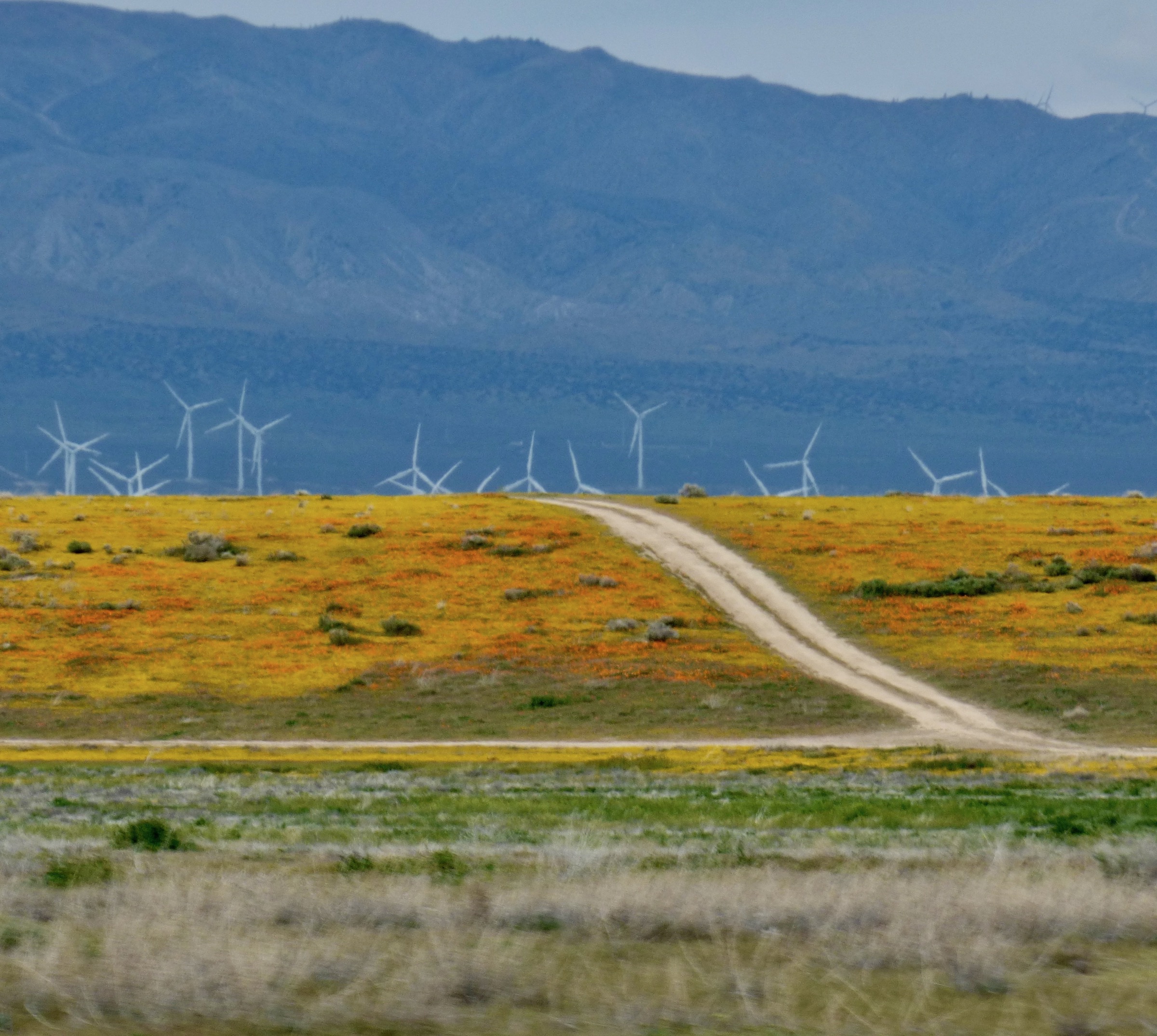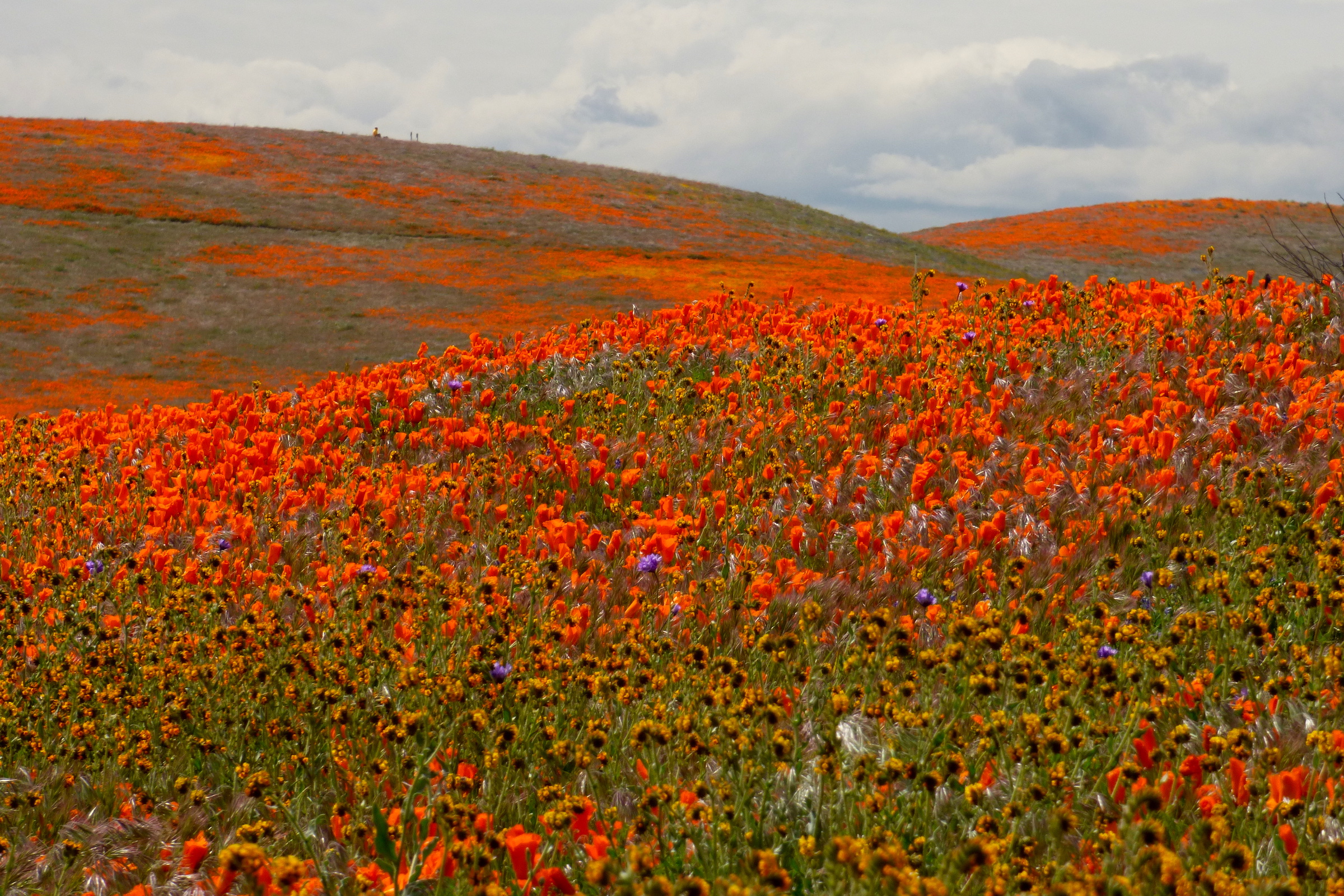When conditions are just right the high desert east of Los Angeles blooms in a mad profusion of color, and spring 2019 may be a wildflower year for the record books. Abundant rain at just the right time and a prolonged growing season that was neither too hot nor too cold has transformed the usually sere and dusty hills of Lancaster into the Magical Land of Oz.
The Antelope Valley Poppy Reserve State Natural Area draws visitors from all over the world. This month the Messenger Mountain News made the pilgrimage. We can verify that the bloom this year truly is super and worth the hour-plus drive. So many poppies are in bloom the preserve can be seen for miles across the valley floor, a vivid orange like a flow of lava.
The Messenger Mountain News visited in early April during peak bloom but park officials are optimistic that the season this year will last throughout April and possibly into early May.
In a good year, wildflowers bloom for miles surrounding the reserve, and a drive around the periphery of the park can yield stellar photo opportunities, but all of the surrounding land is privately owned. To actually walk on trails among the poppies, a visit to the park is essential.While the poppies dominate the landscape, many other wildflower species also thrive here, including owl’s clover, fiddlehead, lupine, goldfields, cream cups, and annual coreopsis. Look for acres of goldfields on the trip through the Antelope Valley to the reserve. This is a good time of year to catch the Joshua trees in bloom as well. This iconic high desert plant is actually a member of the lily family, and it produces huge bracts of lily-like cream-colored flowers in a good year.
A weekday morning is the ideal time to visit. The poppies close in the afternoon, or when the wind comes up. The crowds tend to be smaller in the morning, as well. This is a popular destination and crowds can be almost overwhelming on a weekend afternoon, with the worst gridlock not on the freeways but on the road leading out to the reserve. It’s a nearly 200-mile round trip from Topanga. A visit ideally requires a full day.
Once inside the 1,781-acre park, a short walk on one of the trails will leave much of the crowd behind. Many visitors appear content to view the flowers nearest the parking lot or along the road into the park.
Visitors are asked to stay on official trails and avoid trampling the flowers. The Mojave green rattlesnake is another reason to stay on the trails. This highly venomous reptile is common in the flower fields. It is generally a peace-loving snake, but can be aggressive, especially when stepped on.
Other wildlife species in and around the park include burrowing owls, horned larks, and occasionally, a passing golden eagle or California condor. Bees are often present in large numbers.
The Antelope Valley Poppy Reserve is in the high desert, with an elevation ranging from 2600-3000 feet. It can be cold or hot, and is almost always windy and dusty. Dressing in layers is recommended. It’s a good idea to bring water and to wear sturdy shoes and sunscreen. Allergy and asthma sufferers should come prepared for dust, pollen, and the presence of bees.
Arthur B. Ripley Desert Woodland State Park is just seven miles from the Poppy Reserve, just past West 205th Street. This small park—566 acres—offers a small section of pristine Joshua tree and juniper woodland, an increasingly rare habitat that once covered large swaths of the western Antelope Valley. The admission ticket for the Poppy Reserve ($10 per car) can be used at this park as well.
The reserve is located 15 miles west of Lancaster at 15101 Lancaster Road. For updates call the Poppy Reserve Wildflower Hotline: (611) 724-1180, or visit the website: http://www.parks.ca.gov/?page_id=627

